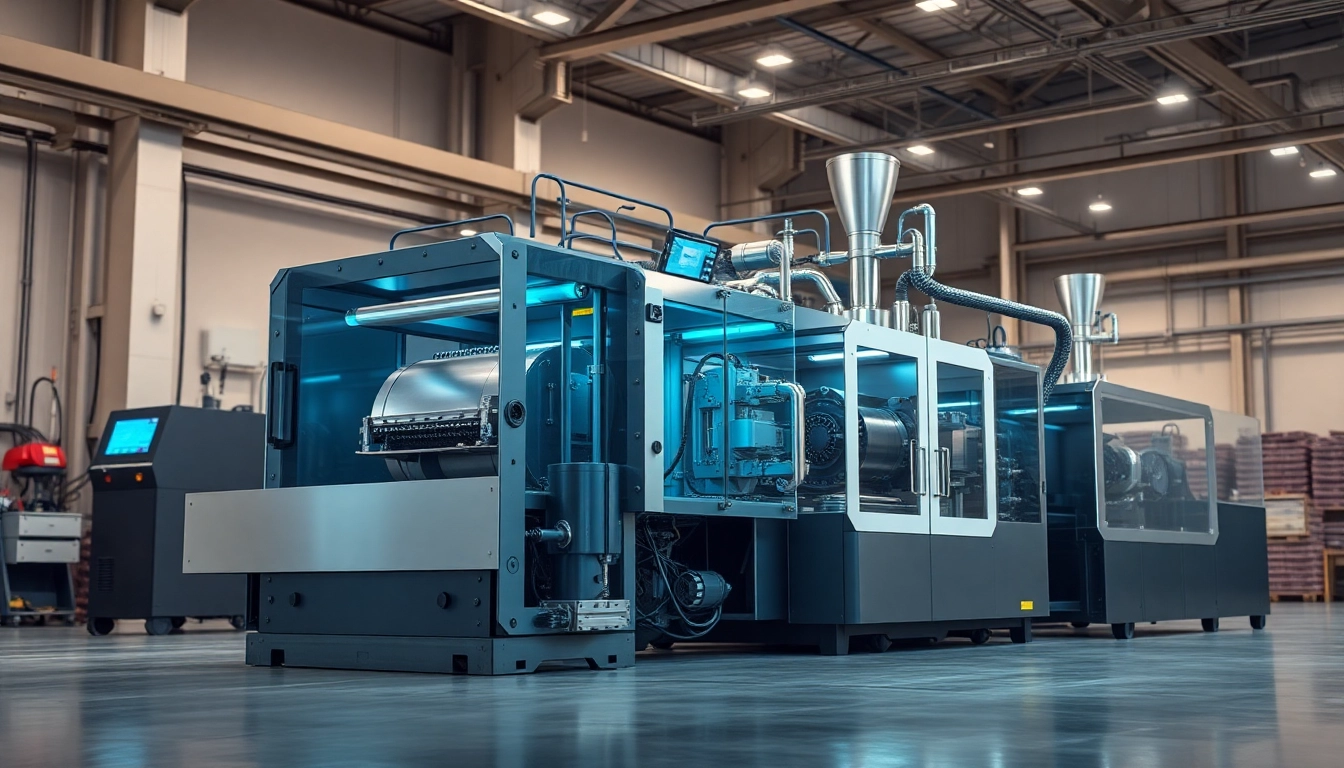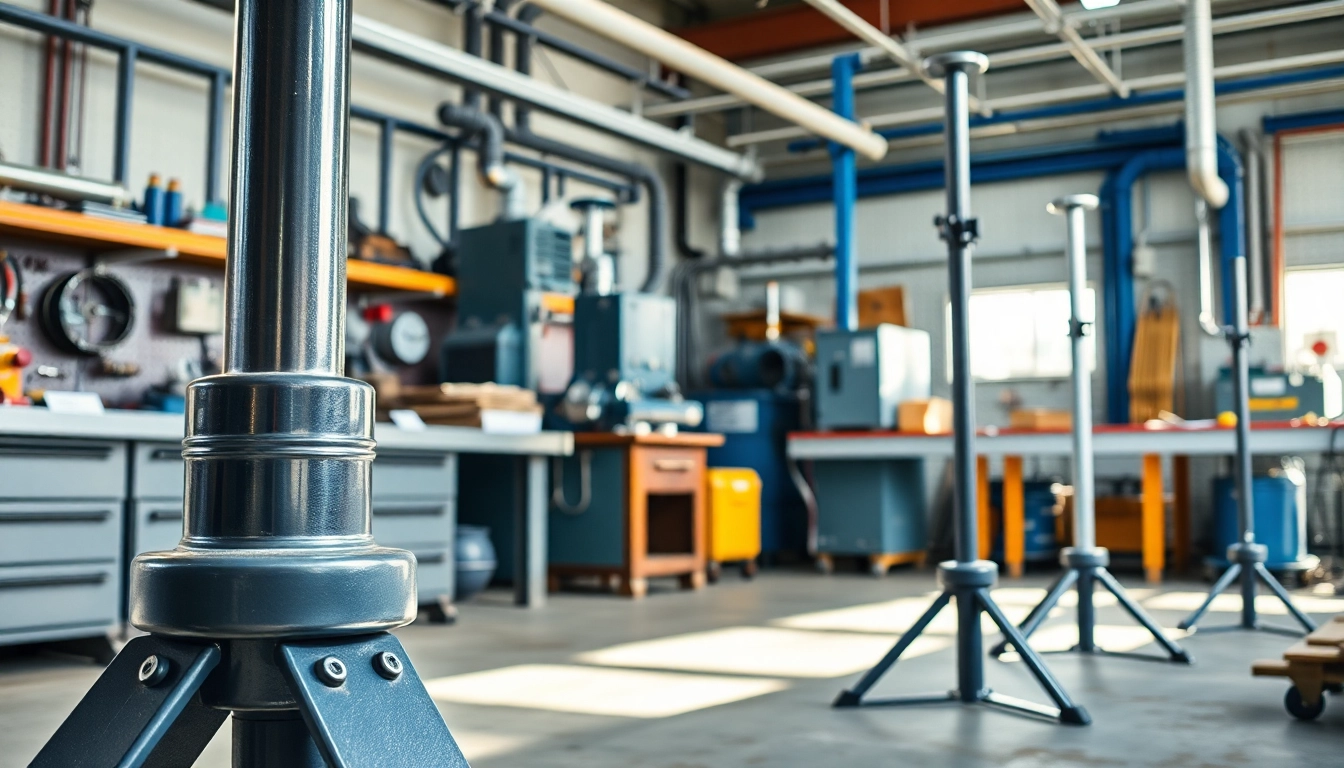Understanding Blow Molding Technology
Blow molding is a manufacturing process used to create hollow plastic parts, particularly containers, bottles, and other similar products. It leverages the properties of thermoplastics to shape materials into virtually any size or complexity, giving businesses the ability to produce various types of products efficiently. As a leading Blow Molding Machine Supplier, we understand the intricacies and applications of this technology. This article will dive into the various blow molding processes, the components of blow molding machines, and the industries that benefit from these innovations.
Types of Blow Molding Processes
Blow molding can be primarily categorized into three types: extrusion blow molding, injection blow molding, and stretch blow molding. Each process offers distinct advantages and is suitable for different applications.
- Extrusion Blow Molding (EBM): This method involves extruding molten plastic into a mold, where air is then blown into it to create the desired shape. EBM is well-suited for producing large, hollow parts and containers. Benefits of EBM include lower production costs for high volume output and versatility in container shapes.
- Injection Blow Molding (IBM): In this process, plastic is injected into a preform mold, and then air is blown into the mold to expand it to the final shape. IBM is excellent for producing complex shapes with high precision and is commonly used for smaller bottles and cosmetic containers.
- Stretch Blow Molding: This technique combines injection molding with blow molding, utilizing a preform that is stretched vertically before air is blown in. This results in containers with thinner walls and high clarity, making it ideal for beverage bottles and other transparent products.
Key Components of Blow Molding Machines
The effectiveness of blow molding relies heavily on the technology and components of the machines used. The main components include:
- Extruder: A crucial part for EBM, the extruder melts and forms the plastic into a parison, which is subsequently shaped into the final product through controlled air inflation.
- Molds: The precision and durability of molds are critical. They dictate the shape and surface finish of the product. Molds are typically made from high-quality steel and are designed for easy maintenance and quick changeovers.
- Clamping Unit: It holds the molds together during the molding process. It must provide consistent pressure to ensure the mold stays watertight and secure.
- Control System: Modern machines utilize computerized controls to manage temperature, pressure, and timing automatically, optimizing production efficiency and quality.
Applications and Industries Served
Blow molding technology is employed across various industries, providing innovative solutions for packaging and product design. Key sectors include:
- Food and Beverage: The beverage industry heavily relies on blow molding for water, soda, and other liquid containers. Its ability to create lightweight yet durable bottles consistently is invaluable.
- Pharmaceuticals: Blow molding is used to create bottles for medicines and supplements. The precise and sterile nature of the manufacturing process ensures product safety.
- Automotive: Components like fuel tanks and air ducts are often produced using blow molding, allowing for lightweight and complex designs.
- Consumer Goods: Many everyday items, from household cleaners to cosmetic products, utilize blow-molded packaging to enhance consumer convenience and branding effectiveness.
Choosing the Right Blow Molding Machine
When selecting a blow molding machine, several critical factors can impact your manufacturing efficiency and product quality. It’s essential to consider how each element aligns with your production goals.
Factors to Consider
When assessing various blow molding machines, consider the following:
- Production Volume: Identify your typical production runs. High-volume production may warrant investment in automatic machines with higher output capabilities.
- Material Compatibility: Ensure the machine can handle the specific types of plastics you intend to use. Different processes exploit different material properties, which can influence the choice of machinery.
- Product Specifications: Consider the dimensions, weight, and complexity of the products you plan to produce. Machines are often tailored to specific product profiles.
Cost vs. Efficiency Analysis
The balance between cost and efficiency is vital when selecting a blow molding machine. While lower initial investment machines may seem appealing, their long-term operational costs, including energy consumption, maintenance, and output rate, must be evaluated. Often, investing more in a higher-efficiency machine can yield significant savings through decreased costs per unit over time.
Supplier Reputation and Support
Choosing a reputable supplier ensures that you receive quality machinery backed by reliable support. Evaluate suppliers based on:
- Experience: Look for suppliers with extensive industry knowledge and a history of successful implementations.
- Technical Support: Verify that robust technical support is available after purchase. This safeguards against unplanned downtime and operational issues.
- Customer Reviews: Analyze feedback from existing customers to gauge satisfaction and performance metrics that matter. Effective suppliers will always give insight into their customer service and post-sale assistance.
Innovations in Blow Molding Machinery
As technology evolves, so does blow molding machinery. The latest innovations focus on enhancing efficiency, sustainability, and connectivity within manufacturing environments.
Eco-Friendly Technologies
With an increasing emphasis on sustainability, several innovations in blow molding machinery reflect eco-friendly practices. These include:
- Recyclable Materials: Many blow molding machines are designed to process recycled plastics, thus reducing waste and enhancing material circularity.
- Energy-Efficient Technologies: State-of-the-art machinery incorporates energy-saving features that minimize energy use during operation.
- Water Conservation: Advanced cooling systems can utilize less water, further contributing to sustainable manufacturing practices.
Smart Machine Integration
The advent of Industry 4.0 has introduced smart manufacturing concepts into blow molding. Machines are increasingly equipped with IoT capabilities, allowing for real-time monitoring and data analytics. This connectivity leads to:
- Predictive Maintenance: Manufacturers can leverage data insights to anticipate when maintenance is needed, lowering downtime and repair costs.
- Process Optimization: Data-driven adjustments can be made on-the-fly, enhancing quality control and overall production efficiency.
Future Trends in Blow Molding Solutions
The future of blow molding is likely to see further integration of automation and AI, along with enhanced customization options. Advancements such as multi-layer blow molding and improved flexibility in design could cater to the growing demand for unique and personalized packaging solutions.
Maintenance and Troubleshooting
Effective maintenance and swift troubleshooting are crucial to ensure the longevity of blow molding machinery and minimize production disruptions. Here are essential practices and common issues to address.
Essential Maintenance Practices
Regular maintenance is vital for optimal performance:
- Scheduled Inspections: Implement a maintenance schedule to check critical components, fluids, and electrical systems regularly.
- Cleaning: Regularly clean the machine to prevent buildup that can affect operation and quality.
- Lubrication: Ensure all moving parts are adequately lubricated to reduce wear and prevent mechanical issues.
Common Issues and Resolutions
Common challenges that arise during blow molding operations and their resolutions include:
- Mold Issues: Irregularities in the finished product can indicate mold wear or contamination. Regular mold cleaning and timely replacements can mitigate this.
- Plastic Flow Problems: Issues in material flow can affect production and require adjustments to the feed rate and temperature, ensuring optimal melting conditions.
Importance of Professional Support
Given the complexities of blow molding machinery, having access to professional support is vital. Technicians familiar with specific machines can expedite solutions to problems that may arise, ensuring minimal disruption to production schedules.
Connecting with Blow Molding Machine Suppliers
Choosing the right supplier is foundational to success in your blow molding endeavors. Evaluating multiple suppliers can result in better pricing, enhanced services, and superior technology.
Evaluating Suppliers and Manufacturers
When considering potential suppliers, it is essential to review not only their machinery and costs but also the full scope of services offered:
- Consultations: A reputable supplier will take the time to understand your unique needs and suggest tailored solutions.
- Demonstrations: Seeing equipment in action can help evaluate performance claims, ensuring you’re confident in the investment.
Building Long-Term Partnerships
Establishing a long-term relationship with your blow molding machine supplier can yield significant benefits, including better pricing, priority customer service, and access to the latest innovations. Regular communication and collaboration can leverage both parties’ strengths.
Customer Testimonials and Case Studies
Evaluate suppliers by reviewing case studies and customer testimonials. Understanding how they have successfully served other businesses can provide insight into their reliability and capabilities. Feedback from satisfied customers is often a reliable predictor of prospective partnership satisfaction.


